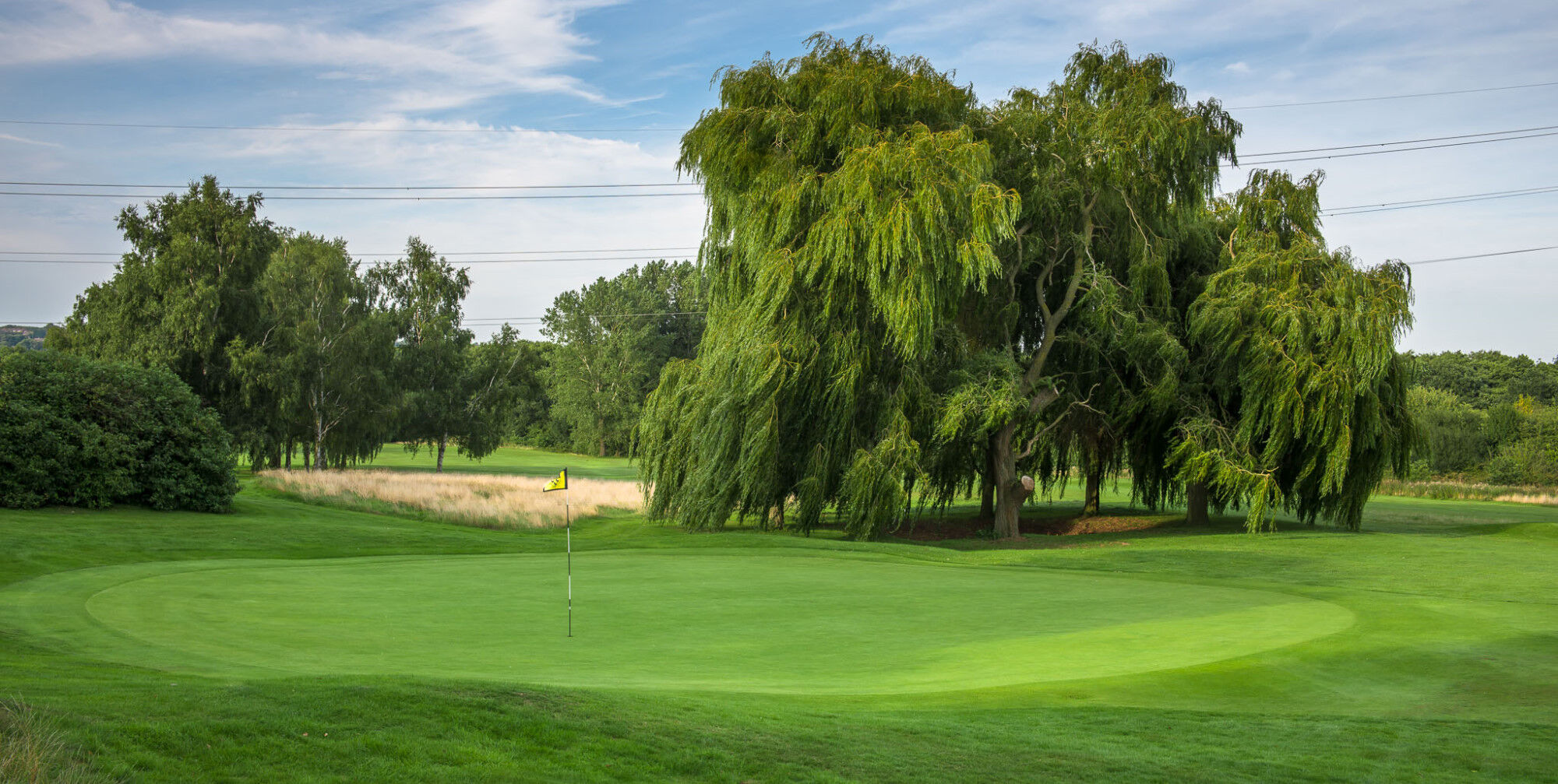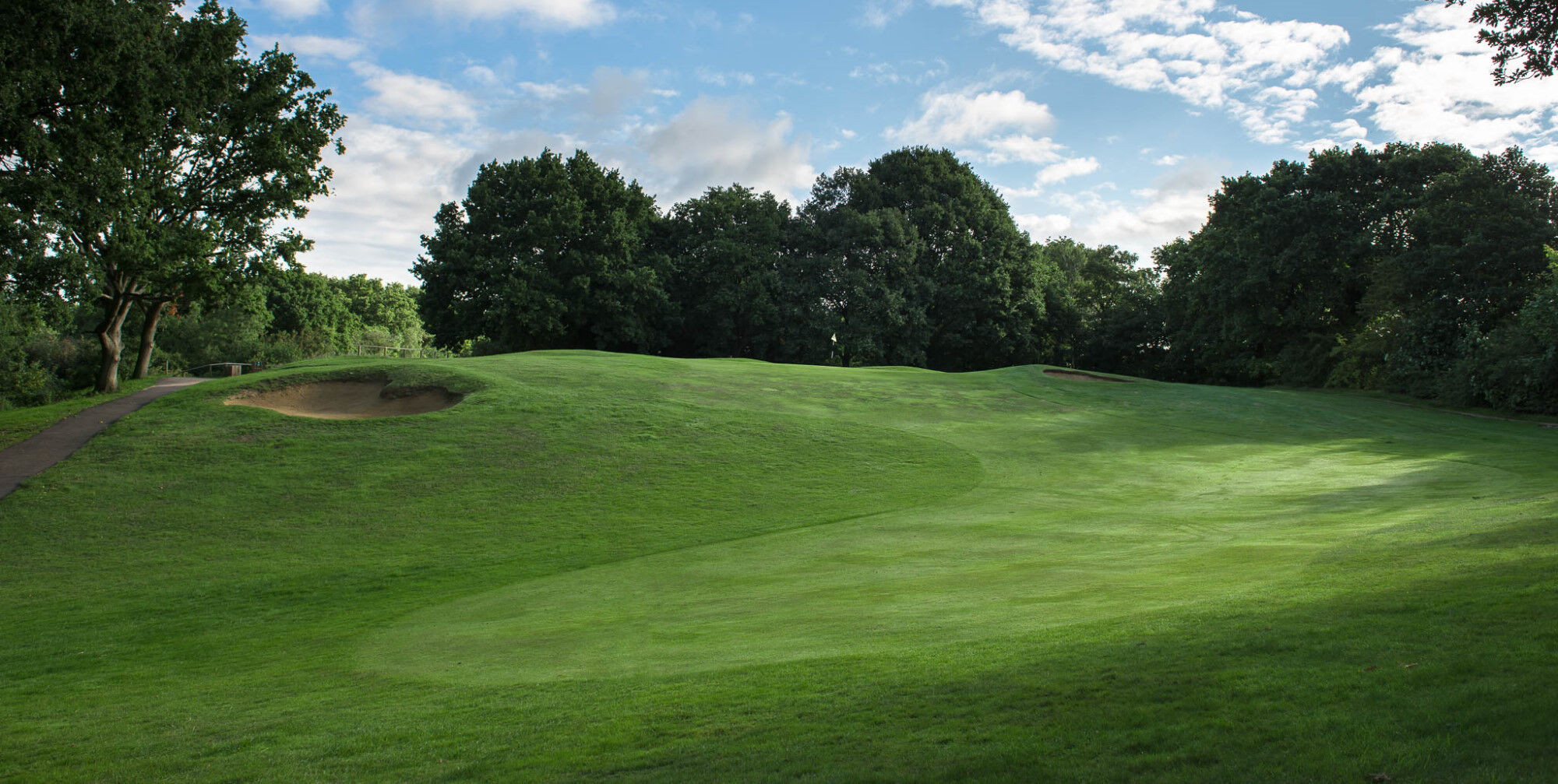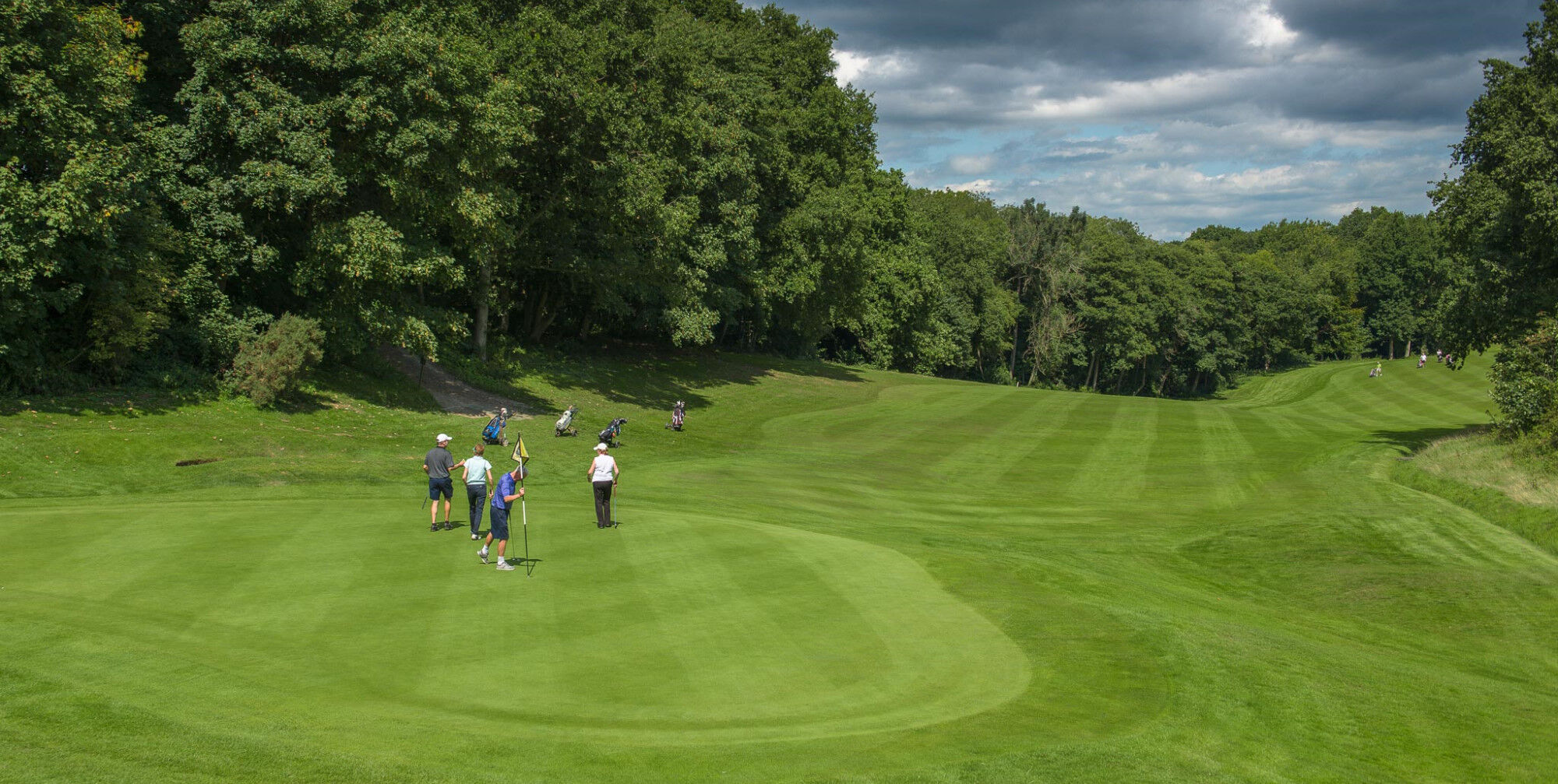Hand in Hand With Nature
Compiled by Colin Buttenshaw.
Canterbury Golf Club works closely with Natural England, who are the government's adviser for the native environment in England and who help to protect, restore and sustain the country's natural world for the benefit of present and future generations.
The golf club is happy to align itself to Natural England's principles and host regular visits for assessment and guidance.
So, let's investigate the course from an ecological perspective.
The course was laid out over a mixture of Thanet Beds (Thanet Sand) and London Clay. From the 10th tee through the higher 14th fairway, 15th, 17th and 18th tee, Thanet Sand is the underlying soil and consequently drains extremely well. In earlier days, bunker sand was extracted from a quarry that can still be seen on the right-hand side of the path leading from the 18th tee.
Most of the rest of the course has London Clay as its top soil. Clay is far less porous, holding water in wet weather and drying out completely in warm, sunny conditions, making it notoriously infertile.
There are also numerous natural springs to be found on the course. They are mainly sourced in the higher Thanet Beds and flow into the London Clay.
Locations include the sixth green, which has natural springs to the left and right of it, the 10th green, which is affected by a spring that flows under the 15th fairway and appears on the green itself and the 12th green, which is home to at least three springs.
The pond by the first tee has natural water supplied from a spring opposite the caravan site facing the entrance to the club.
Ditches on the course are fed by springs. Many now flow through the ever-increasing woodland, but older club members recall a time, some 40 to 50 years ago, when these ditches were open and had clear, clean, drinkable water running between the first and both the 16th and 18th fairways.
Various areas of the course are designated as Sights of Special Scientific Interest and there is a mountain of laws, rules and regulations which on the one hand can hinder course management, but on the other sustain its various unique features.
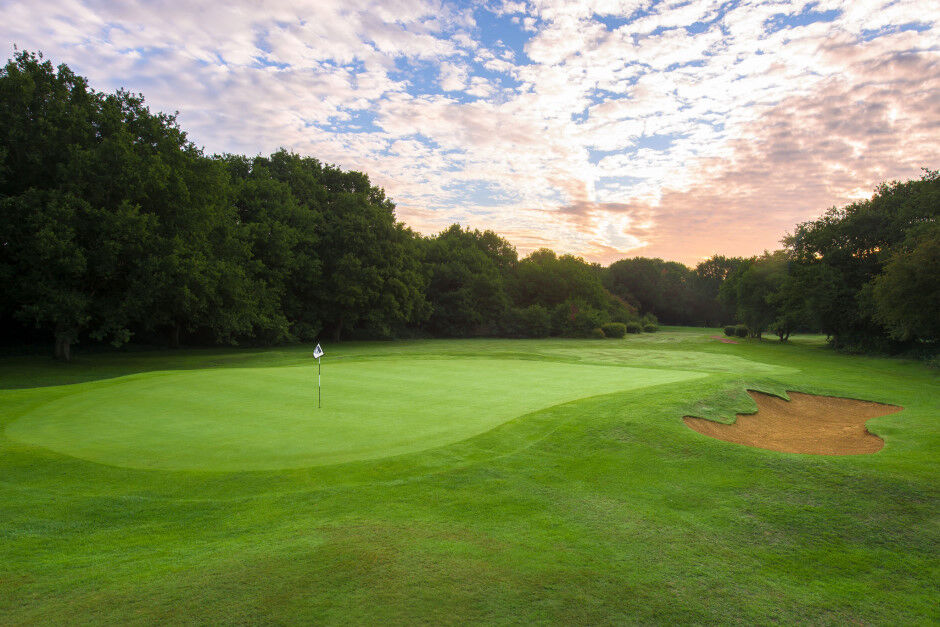
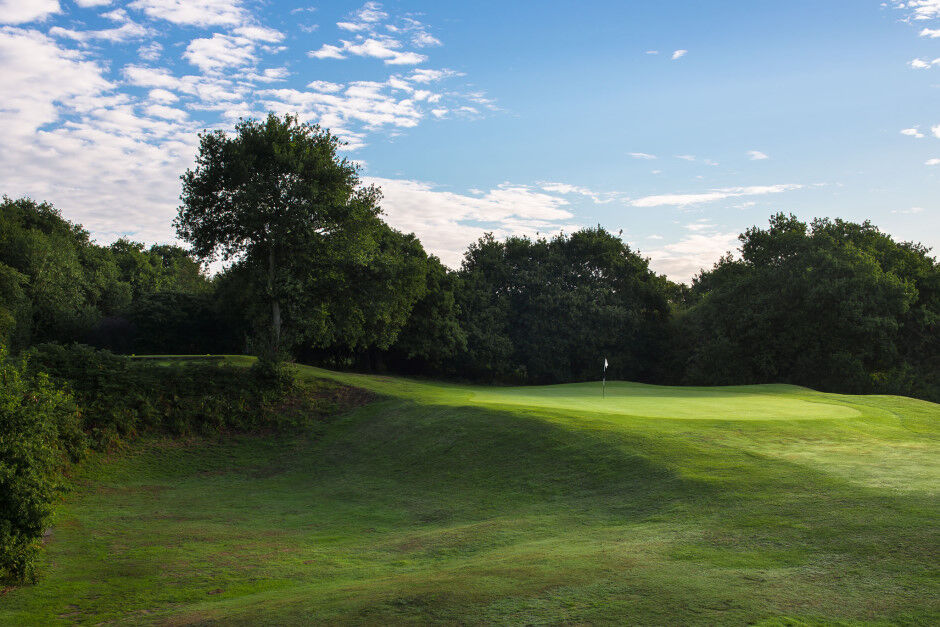
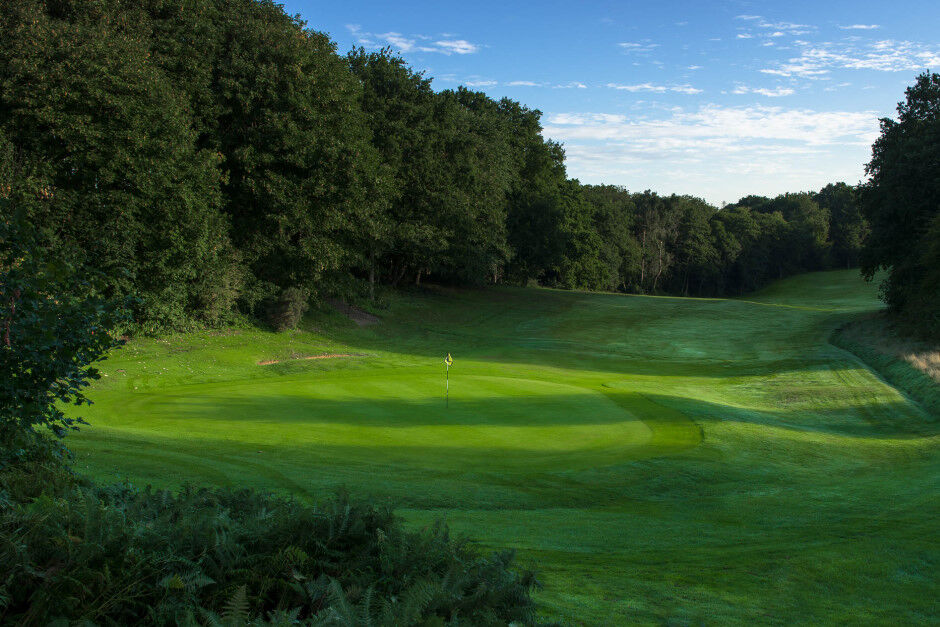
Different course soils have led to a growth of certain species. For example, on the Thanet Sands acidic grassland, bracken, scrub and young birch and oak trees thrive, as do heath bedstraw, trailing St John's wart and bird's foot trefoil, a member of the pea family Fabaceae.
Other parts of the course have alder woodland, an uncommon type of woodland rich in wet woodland plants, including sedges and rare plants such as alternate-leaved and opposite-leaved saxifrages. There are also colonies of southern marsh orchid.
On drier slopes, oak, hazel, silver birch, bracken, gorse and bluebells are abundant.
The course has an abundance of trees, flowers, grasses, bushes and fungi. Some are rare, others plentiful.
Native trees such as alder, oak, hazel, silver birch, hornbeam, beech and willow dominate the woodland areas and between fairways.
Gorse, broom and bracken grow prestigiously on the Thanet Sands areas of the course, especially by the 10th tee, to the right of the 15th fairway and on the right approach to the 18th green.
The course has thickets of blackthorn (sloes), a sea of white blossom in the spring, and hawthorn bushes, plus crab and wild apple trees.
Obviously, the course is dominated by grass. For the connoisseur the grasses are a mixture of bent grass and fescues on the greens, with some undesirable rouge poa annua and meadow grass.
The fairways are also a mixture of bent grass and fescues and annual meadow grass and are cut regularly to allow a better sward density. Similarly, the tees have the same mix, with dwarf rye added, and the rough is the same but left to grow longer.
In spring and summer there are flowers in abundance. On the seventh and ninth woodland areas, the bluebells thrive, and to the right of the seventh, southern marsh orchids can be found, although it is illegal to pick them.
King cups (large buttercups), and yellow iris (by water) are common, as are ransoms (wild garlic) and wood anemones.
Fungi also thrive on the dead and decaying trees found around the course, should one be unlucky enough to visit these areas. In autumn, a large variety of mushrooms, including white spotted scarlet Russela, shiny brown Boletus and delicate pink field mushrooms, are plentiful.
Fallen trees have been deliberately left in situ to encourage habitation for insects, grubs and bees. Similarly, blackberries thrive on several areas of the course.
A wide range of animal life reside on the course and it is rare for a round of golf to be completed without sight of squirrels, rabbits, foxes, the odd pheasant or two and evidence of moles.
You might even be lucky to spot an albino squirrel, which has appeared from time to time. It is questionable whether it is the same one every time, given that the average lifespan is six to 10 years. It is more likely a genetic mutation that occurs every so often.
Birdlife is prolific and bird enthusiasts are in their element likely to chance upon green woodpeckers, greater spotted woodpeckers, wood pigeons, blackbirds, thrushes, magpies, siskins, crows, jays, gull, pheasants, tits (blue, great, long tailed) pied wagtails, wallow sand martins and mallards.
A little less common, but also spotted at certain times of the year are skylarks, chiffchaffs, goldfinches, buzzards, owls, red kite, cuckoos, blackcaps, nuthatches, marsh harriers, hobby, nightingales, wrens and Cetti's warbler.
Players cannot help but notice what appear to be meandering water courses on the third, fourth, fifth, seventh and ninth fairways, especially in wet weather. These are, in fact, the remnants of World War I trenches dug during training by the Army. The soil type is not dissimilar to that found in Northern France.
A legacy from World War II can be found on the approach to the fourth green, where there are three circular, concrete barrage balloon anchor points just below the surface. They really show up during bouts of very dry weather.
Similarly, another WWII reminder is the bomb crater, now surrounded by willow trees, to the right of the sixth green. There is another crater in the woods between the seventh and ninth fairways.


